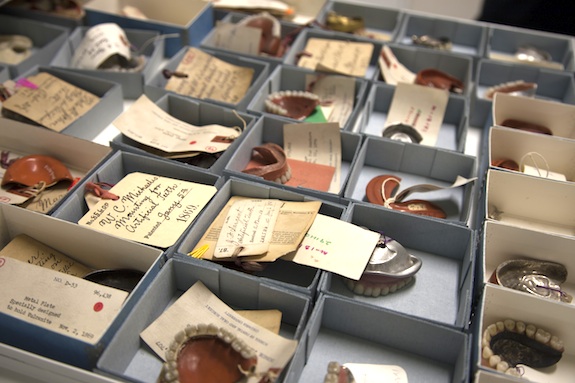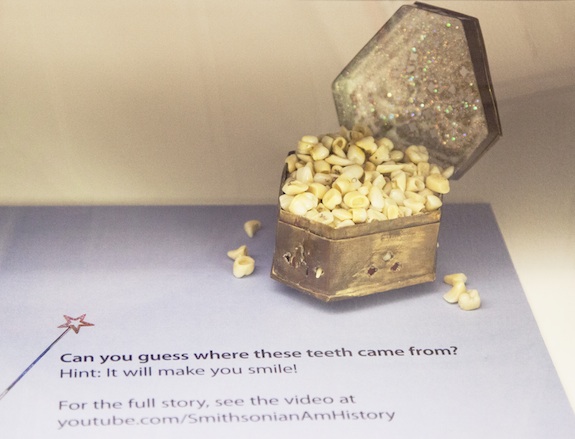Where Does the Tooth Fairy Put All Those Teeth?
A new video introduces kids to the wonders of museums with help from a familiar friend
![]()

About the tooth fairy’s exploits, curator Katherine Ott says of her mystery game, “As far as I know, no one really knows what happens to the teeth, so it was ripe for solving.” Photos by Leah Binkovitz
As a curator of medicine at the American History Museum, Katherine Ott is used to seeing some odd things. But when she started spotting collections of teeth tucked around the museum, she got suspicious. With the help of other curators and even the director, Ott put together a video documenting her hunt for answers. Turns out, lots of odd things had been happening across the collections and all signs pointed to one culprit: the tooth fairy!
Spoiler alert, the documentary is actually more of a “mockumentary,” and the tooth fairy is none other than Katherine Ott herself. She created the video as a tool to get kids thinking about how objects end up at the museum and the process of collecting.
“Years ago when we were cleaning out the old medical storage hall, I found this box of teeth,” says Ott. The teeth were actually fakes, made for dentures by the Philadelphia company S.S. White. Hundreds of loose pearly whites (or faded yellows at this point) filled jars and folders.
“They were just there and I thought, ‘Oh my god, the tooth fairy was here!’” Ott and her coworkers made up a fake file of crime scene investigations and enlisted the help of an American University graduate student to film the video.

Crime scene materials from the Tooth Fairy File.

Cranks from the collections. These were used to pull teeth.

Dentures dating back to the 1800s. Many of them have the patent information attached to them.

And for the curious kids, this chest of tooth fairy finds is hidden somewhere in the museum.
“The hope is to get little kids to learn without knowing they’re learning,” she says. Ott even learned a little something, discovering a whole new character in the process, Ratoncito Pérez. The story of the tiny rodent originated in Madrid, but is popular in Latin America where the critter acts as a sort of tooth fairy.
With an international appeal, the video is intended to reach as many kids as possible. Locals and visitors are encouraged to come to the museum and hunt for the tooth fairy’s glitter-covered box of teeth.
Ott says the quirkiness of the video, which coincides perfectly with National Tooth Fairy Day on February 28, also highlights the quirkiness of the work she does. She’s always thinking about how to bring her collections to as broad an audience as possible. To that end, she participated in this year’s TweetUp event, showing off her wares to admiring Tweeters and Instagramers in a behind-the-scenes tour.
The museum plans to leave the “hidden” cache of tooth fairy teeth on display indefinitely in one of the first floor display cases for inquiring minds to discover for themselves, so plan your visit accordingly.
/https://tf-cmsv2-smithsonianmag-media.s3.amazonaws.com/accounts/headshot/Leah-Binkovitz-240.jpg)
/https://tf-cmsv2-smithsonianmag-media.s3.amazonaws.com/accounts/headshot/Leah-Binkovitz-240.jpg)